Like in Western cooking, there are many salad dressings in Japanese cuisine. Here is a summary of commonly used Japanese Dressings that are made using vinegar / citrus as a base. Once you remember the proportions, all you need to do is to come up with a good combination of vegetables, seaweed and protein.
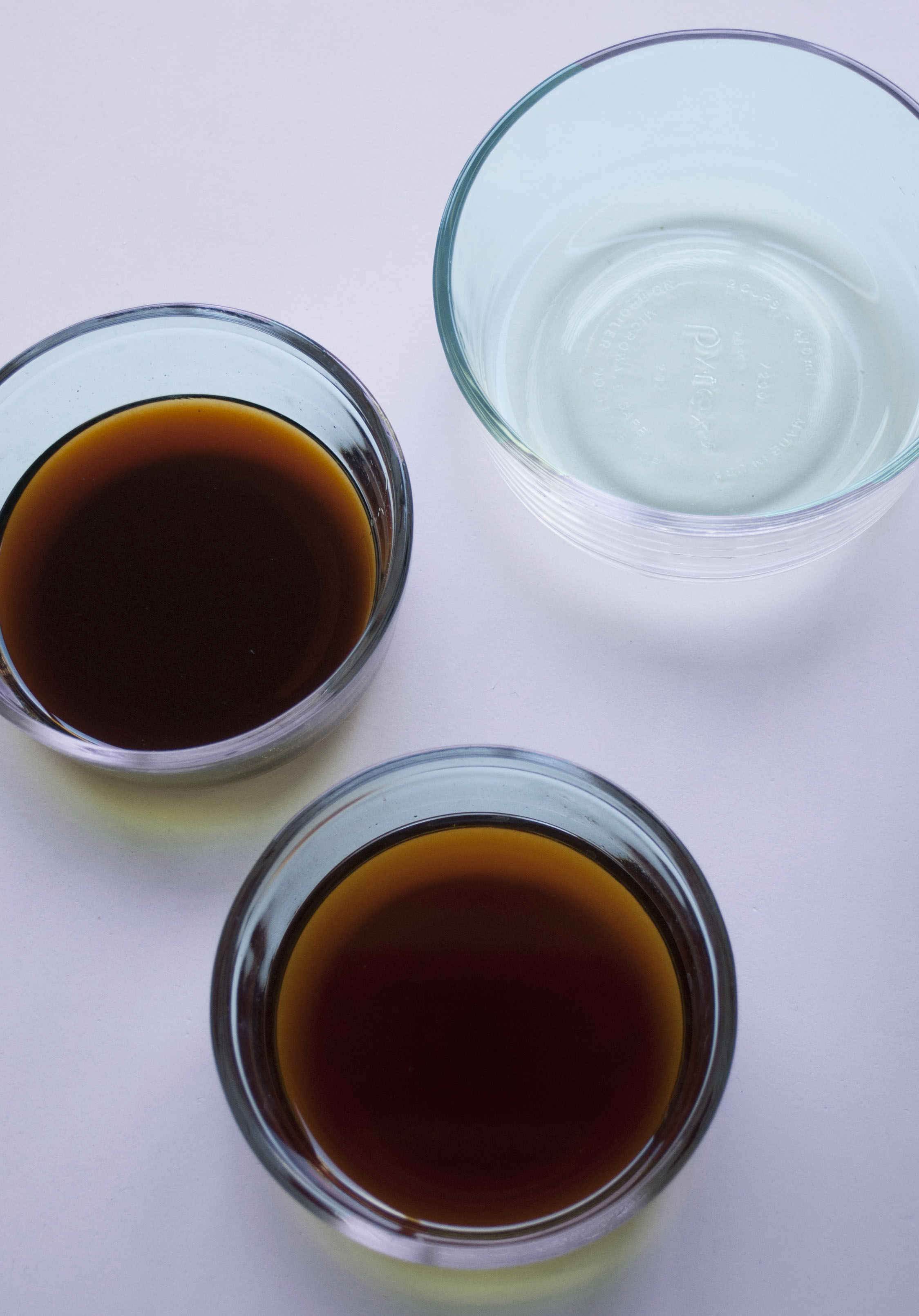
The blog title “Dressings” is a little misleading here as some of the “dressings” are also used as marinades or dipping sauces. But they all have acidity and no oil. The vinegar/citrus based clear dressings are called awase-zu (合わせ酢) as a whole. Awase (合わせ) means mixing in this context and zu (酢, vinegar).
Common ingredients to make the dressings are shown in the photo below. From left to right: shouyu or shoyu(醤油, normal soy sauce), usukuchi shouyu (薄口醤油, light soy sauce), mirin (味醂), sake (酒), su (酢, vinegar). I included sake even if it is not used in the recipes below as sake belongs to this condiments group.
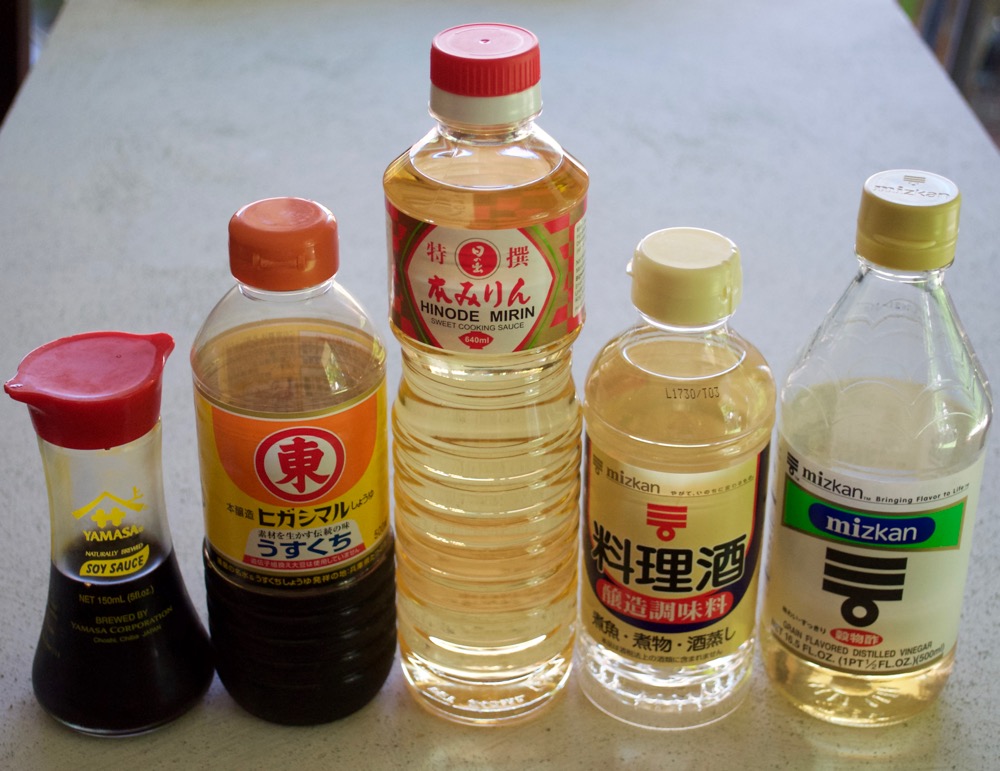
Shouyu (醤油, soy sauce)
There are several different kinds of soy sauce in Japan and nowadays you can buy dark soy sauce and possibly salt reduced soy sauce at supermarkets. You can buy many of them at Japanese grocery stores. Main types of soy sauces are:
- Dark soy sauce (or just “soy sauce”) – normal soy sauce widely used in general cooking as well as pouring over food.
- Light soy sauce – lighter in colour and 10% saltier than normal soy sauce. Used in dishes to enhance the colour of the ingredients or in noodle soups.
- Salt reduced soy sauce – this is made in the same process as dark soy but the amount of salt is reduced to almost half. This was produced for people with hypertension, heart diseases, kidney diseases but these days many people in Japan use this to reduce amount of salt intake.
- Tamari soy sauce – this soy sauce is thicker and richer than normal soy sauce and used as dipping soy sauce for sashimi. It can also be used to make Teriyaki sauce.
- Shiro soy sauce – extremely light in colour, almost like the colour of fish sauce. It contains touch of sweetness but strong salty flavour. This is suitable for simmered dishes.
I use either Kikkoman, Yamasa, or Higashimaru brand.
Mirin (味醂)
Mirin is made from sticky rice. It contains 40-50% sugar and 14% alcohol. It is not only used for cooking food but for noodle soup and for giving food its glaze. You can buy mirin at Asian grocery stores and some super markets.
You can also buy artificial mirin called ‘mirinfū chōmiryō‘ (みりん風調味料). It is usually labelled ‘Mirin Seasoning’. It is not made from rice but syrup and glucose with 1% alcohol. Real mirin normally has the label “Hon Mirin” (本味醂) to distinguish it from artificial mirin. “Hon” comes from the word “honmono” (本物) which means “real”. High quality mirin can be drunk directly from the bottle, though it is very sweet.
My choice of brands are Hinode, Takara, and Manjo.
Sake (酒, Japanese rice wine)
Like mirin, you can also buy sake which is used for only cooking. It is called ryori-shu (料理酒) meaning “cooking sake”. The bottle in the photo is ryori-shu. I normally use ryori-shu and it is cheaper than real sake.
The important thing to remember though is that most ryori-shu has salt in it so if you use real sake, you might need to make a tiny adjustment to the amount of saltiness. You can buy sake, particularly ryori-shu at any Asian grocery stores or super markets.
I use Mizkan brand cooking sake which contains salt. But more frequently, I use Takara brand cooking sake which contains zero salt.
Su (酢, vinegar)
Just like Western style vinegar, Japanese vinegar also has varieties. The most commonly used Japanese vinegar is grain vinegar and rice vinegar. You can buy both types of vinegar at Asian grocery stores of some super markets.
The vinegar bottle in the photo above is grain vinegar. Grain vinegar is made from mixture of wheat, rice and corn while rice vinegar is made purely from rice and more expensive. In the case of rice vinegar, you will see the kanji character “米酢”(kome-zu) meaning “rice vinegar” on the label to distinguish it from grain vinegar.
I use Mizkan brand which sells both types of vinegar – grain vinegar and rice vinegar.
Common dressings are listed here with ingredient proportions. Eg. Rice Vinegar 3 + Sugar 1 + Salt ¼ means 3 parts rice vinegar, 1 part sugar and ¼ part salt. There are no definitive proportion to make these. You can adjust the quantity of each ingredient to your liking.
Sushisu (寿司酢, sushi vinegar)
- Rice Vinegar 3 + Sugar 1 + Salt ¼
- Suitable for making sushi rice
- Amount of sushisu should be 10-15% of cooked sushi rice or short grain rice
Amazu (甘酢, sweet vinegar)
- Rice Vinegar 1 + Sugar 1 + dash of salt
- Suitable to marinate vegetables
- Example – julienned daikon (white radish) and carrots salad
Gomadare (ゴマだれ, sesame sauce)
- Makes 120ml (4 oz)
- Ground roasted white sesame seeds 4 tbsp + 2 tbsp dashi stock (refer to Home Style Japanese Dashi Stock) + 1 tsp miso + 2 tsp Rice vinegar + 2 tsp Soy sauce + 2 tsp Mirin
- Suitable for salad dressing, also as dipping sauce for hot pot.
- Example – green leaves salad, Shabu-shabu hot pot
Nihaizu (二杯酢, 2 ingredients vinegar)
- Rice vinegar 3 + Soy sauce 2.5
- Suitable to dress/marinate seafood or seafood with vegetables
- Example – boiled octopus with cucumber, white meat sashimi with okra
Sanbaizu (三杯酢, 3 ingredients vinegar)
- Rice vinegar 3 + Soy sauce 2.5 + Mirin 2-3
- Most commonly used dressing
- Suitable for both vegetables and seafood
- Example – boiled squid and cucumber, boiled chicken and shredded carrot
Ponzu (ポン酢, citrus soy sauce)
- Makes 120ml (4 oz)
- Soy sauce 50ml (1.7 oz) + Lemon or Lime juice 50ml + Mirin 15-20ml (0.5-0.7 oz) + Katsuobushi (dried bonito flakes) 5g (0.2 oz) + Konbu (dried kelp) 5cm x 3cm (2 inch x 1 inch)
- Mix all liquids together, then add Katsuobushi and Konbu, leave for at least 24 hours preferably 3 days in the fridge, then strain.
- Keeps for months in the fridge. The longer you leave it the better it tastes.
- Suitable for salad dressing, also as dipping sauce for hot pot.
- Example – seaweed and green leaves salad, Yudofu (tofu hot pot)
Tosazu (土佐酢, Tosa vinegar)*
- Rice vinegar 2 + Light soy sauce 1 + Mirin 1 + dashi stock (refer to Home Style Japanese Dashi Stock) 4-5
- Milder acidity than Sanbaizu
- Suitable for both vegetables and seafood
- Example – Marinade for Shimeji mushrooms and Enoki mushrooms
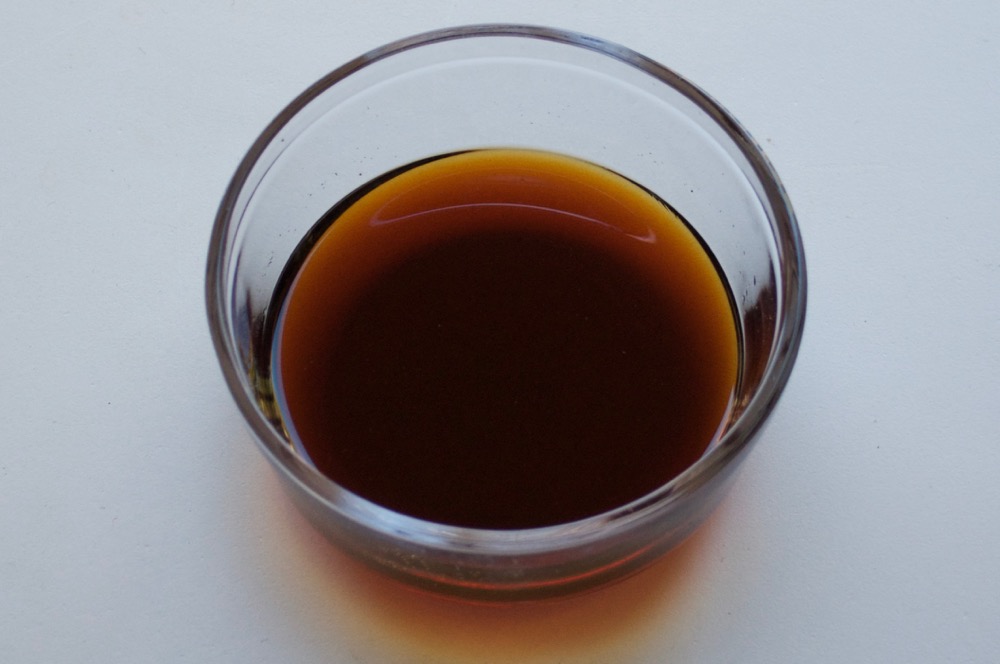
The photo above is sambaizu. See the darker colour of the dressing compared with Tosazu in the next photo. Nihaizu would look very similar to this sanbaizu but marginally darker.
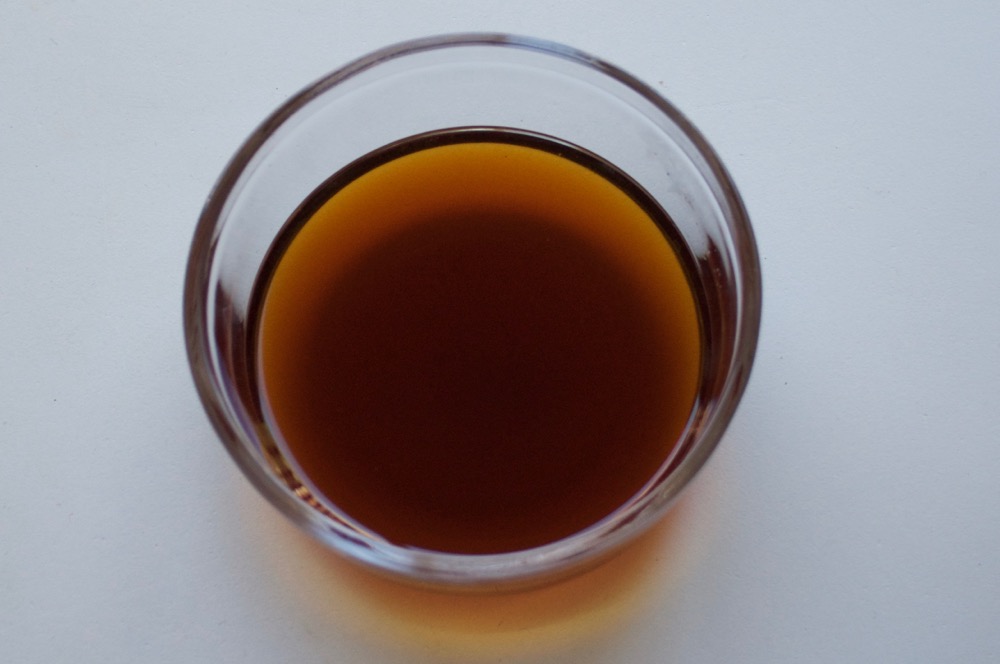
Tosazu in above photo has lighter colour than sanbaizu and nihaizu due to equal amount of dashi stock added to other ingredients.
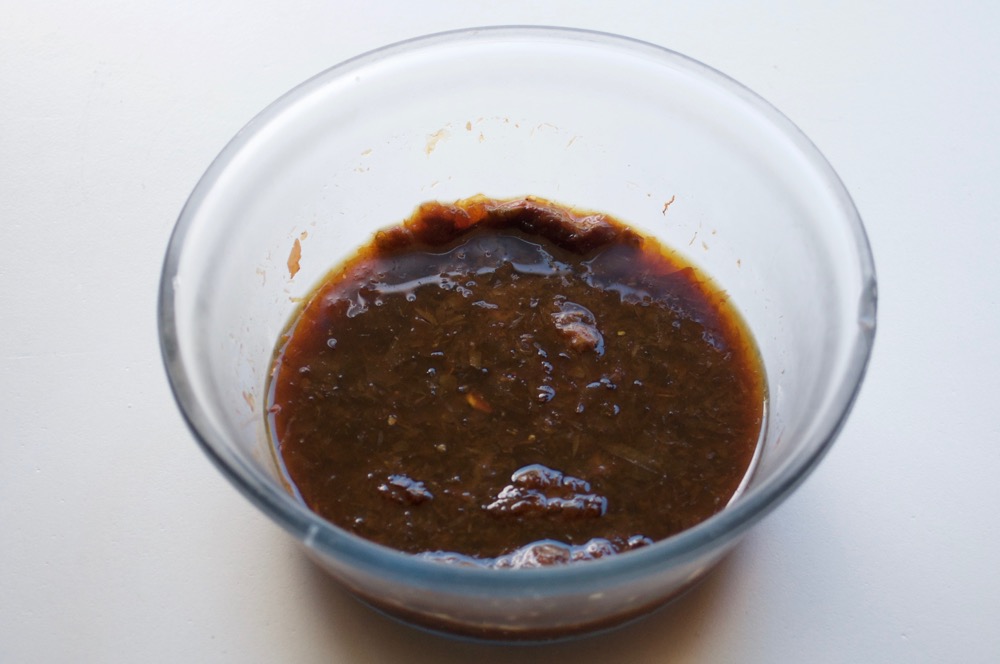
Making ponzu would look like this before straining. Notice the ratio of bonito flakes against the amount of liquid. That’s why it is so tasty.
These are the simple basics and there are many variations to the above dressings. For example, traditional way of making Tosazu makes dashi stock ingredients with vinegar, soy sauced mirin and boil all together.
There are also other dressings using miso, mustard, etc. I am intending to post other dressings and sauces some time later together with recipes.
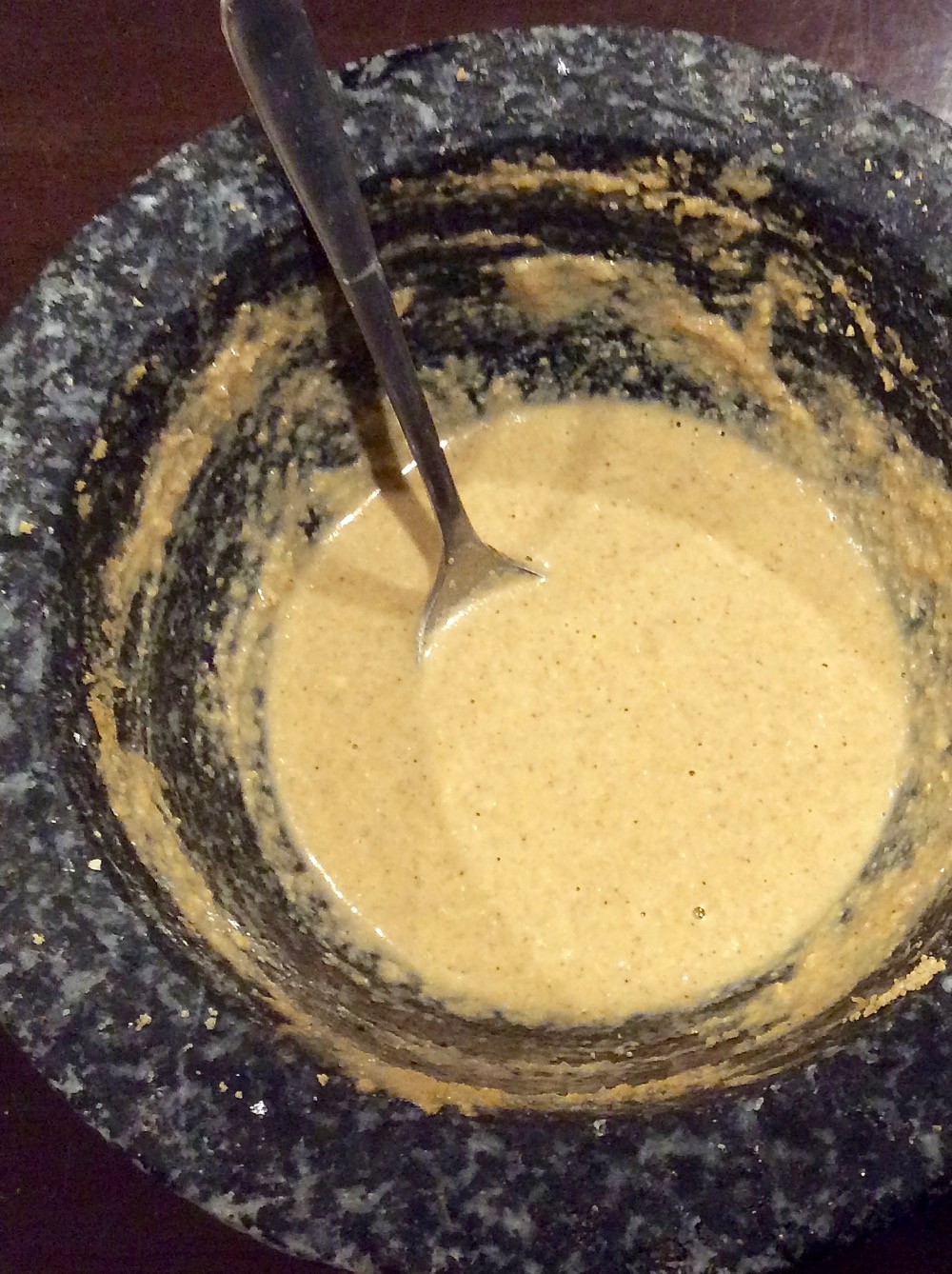
Yumiko![]()
Just found the ‘Dressing’ tab. Fantastic!! All those lovely dressing in one area – thank you for taking the time to compile these. Regards, Sandra
Hi Sandra, I hope you find it useful.
Hello o want to make your TOSAZU but i am not sure how to ready the recipe for rice vinegar is that 2 cups? Tbls, or tsp? Thank you in advance
Hi Katrine, as indicated in the sentence just above the recipes, the numbers are proportions, i.e. 2 parts rice vinegar + 1 part light soy sauce + 1 part mirin + 4-5 parts dashi stock. If you use 2 tbsp of rice vinegar, then soy and mirin need to be 1 tbsp, dashi 4-5 tbsp. If you use 1 tbsp vinegar, others needs to be 1/2, 1/2, 2-2.5 tbsp respectively. Depending on how much you want to make, the amount can change but the proportion does not change.
Please let me know if you have more questions.
Hi Yumiko, Greetings from Melbourne!
I stumbled on Nagi’s website last night, and yours shortly thereafter. Both are fantastic and I’m grateful for you taking the time to present all of your recipes. One question/request I have for you though; do you make home made shichimi togarashi (七味唐辛子)? If so could you share the recipe please?! I became addicted to this spicy condiment years ago, and consume a lot of it. The stuff that’s available here in Oz never seems to be as good as the offerings that I’ve brought back from Japan, and only seems to be either loaded with salt or only available in stupid little supermarket spice bottles that last about a week.
Cheers!
Hi Marco, I don’t have a recipe for that unfortunately. The combination of ingredients for shichimi togarashi varies by brand but it usually contains: chilli, black sesame seeds, mandarin rind, sansho (similar to Schezuan pepper), poppy seeds, aonori (green seaweed flakes), gingr, perilla. All dried and grated or made to tiny flakes.
You might be able to buy a large bag online, eg. Amazon but then, you’d have to pay for the delivery.
Hi Yumiko, thanks for taking the time to respond; I’ll try making some using the ingredients you’ve listed; need to keep busy during the lockdown:) Marco
Hi Marco, please let me know how it went. Stay safe!
Hi Yumiko.
I concur with Marco re Shichimi – availability + taste here in Australia, so searched the internet and came up with ‘my’ version. It has some rock salt – which is not authentic – so leave it out if desired, and increase the chilli for a bigger hit! I used home dried orange peel, just peel and dry in the sun or dehydrator + and home grown + dried Thai chillies, which are pretty hot, so adjust to taste. I sprinkle this on EVERYTHING. Eggs, [poached, fried, scrambled], tomatoes, a bowl of rice, etc.
Guy’s shichimi [7-spice pepper]
Spice grinder or suribachi…., whiz/crush to a coarse powder:
1 tbsp black peppercorns
1 tbsp rock salt
1 tbsp coriander seeds
1 tbsp dried chilli flakes or 2 tbsp whole dried chillies
1 tbsp Schechwan peppercorns [if you have them]
Some pieces of dried mandarin peel [orange, yuzu, lime or lemon would work too]
…until you have a coarse powder.
Add: 2 tbsp black or toasted whole sesame seeds + blitz just for second to break them but not pulverise. Can add some dried bonito flakes + nori sheets crumbed too if desired.
Please pass this on to Marco….
Cheers!
Guy
Hi Guy, thanks a lot. Will do.
Hi Guy,
Thanks for taking the time to share your recipe, it’s much appreciated, and timely too since I am just about depleted so I’ll be making this tonight! I bought a big bag of gochugaru recently for kimchi making so I think I’ll use that for the chili component. I really like the suggestion of adding bonito; that sounds inspired.
Thanks again for sharing the recipe, can’t wait to try it; thanks also Yumiko for letting me know that you had posted the recipe!!
Cheers,
Marco
I would like to find a recipe for the white creamy lite dressing that our local Japanese restaurant serves over simple ice berg lettuce. Do you have any ideas how it would be made?
Hi Darlene, it is a bit difficult to tell how it was made without tasting it. The only white creamy dressing that I could think of would be to add mayonnaise to the French dressing, which makes it creamy and white. Start with the same portion of oil, vinegar and mayonnaise, plus pepper and adjust the taste.